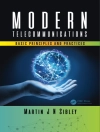A comprehensive overview of Sigma-Delta Analog-to-Digital
Converters (ADCs) and a practical guide to their design in
nano-scale CMOS for optimal performance.
This book presents a systematic and comprehensive compilation of
sigma-delta converter operating principles, the new advances in
architectures and circuits, design methodologies and practical
considerations – going from system-level specifications to
silicon integration, packaging and measurements, with emphasis on
nanometer CMOS implementation. The book emphasizes practical design
issues – from high-level behavioural modelling in
MATLAB/SIMULINK, to circuit-level implementation in Cadence Design
Frame Work II. As well as being a comprehensive reference to the
theory, the book is also unique in that it gives special importance
on practical issues, giving a detailed description of the different
steps that constitute the whole design flow of sigma-delta ADCs.
The book begins with an introductory survey of sigma-delta
modulators, their fundamentals architectures and synthesis methods
covered in Chapter 1. In Chapter 2, the effect of main circuit
error mechanisms is analysed, providing the necessary understanding
of the main practical issues affecting the performance of
sigma-delta modulators. The knowledge derived from the first two
chapters is presented in the book as an essential part of the
systematic top-down/bottom-up synthesis methodology of sigma-delta
modulators described in Chapter 3, where a time-domain behavioural
simulator named SIMSIDES is described and applied to the high-level
design and verification of sigma-delta ADCs. Chapter 4 moves
farther down from system-level to the circuit and physical level,
providing a number of design recommendations and practical recipes
to complete the design flow of sigma-delta modulators. To conclude
the book, Chapter 5 gives an overview of the state-of-the-art
sigma-delta ADCs, which are exhaustively analysed in order to
extract practical design guidelines and to identify the incoming
trends, design challenges as well as practical solutions proposed
by cutting-edge designs.
* Offers a complete survey of sigma-delta modulator architectures
from fundamentals to state-of-the art topologies, considering both
switched-capacitor and continuous-time circuit implementations
* Gives a systematic analysis and practical design guide of
sigma-delta modulators, from a top-down/bottom-up perspective,
including mathematical models and analytical procedures,
behavioural modeling in MATLAB/SIMULINK, macromodeling, and
circuit-level implementation in Cadence Design Frame Work II, chip
prototyping, and experimental characterization.
* Systematic compilation of cutting-edge sigma-delta
modulators
* Complete description of SIMSIDES, a time-domain behavioural
simulator implemented in MATLAB/SIMULINK
* Plenty of examples, case studies, and simulation test benches,
covering the different stages of the design flow of sigma-delta
modulators
* A number of electronic resources, including SIMSIDES, the
statistical data used in the state-of-the-art survey, as well as
many design examples and test benches are hosted on a companion
website
Essential reading for Researchers and electronics engineering
practitioners interested in the design of high-performance data
converters integrated in nanometer CMOS technologies; mixed-signal
designers.
表中的内容
List of Abbreviations xvii
Preface xxi
Acknowledgements xxvii
1 Introduction to Sigma Delta Modulators: Basic Concepts and Fundamentals 1
1.1 Basics of A/D Conversion 2
1.2 Basics of Sigma-Delta Modulators 8
1.3 Classification of Sigma Delta Modulators 15
1.4 Single-Loop Sigma Delta Modulators 16
1.5 Cascade Sigma Delta Modulators 24
1.6 Multibit Sigma Delta Modulators 29
1.7 Band-Pass Sigma Delta Modulators 36
1.8 Continuous-Time Sigma Delta Modulators 41
1.9 Summary 49
2 Circuits and Errors: Systematic Analysis and Practical Design Issues 54
2.1 Nonidealities in Switched-Capacitor Sigma Delta Modulators55
2.2 Finite Amplifier Gain in SC-Sigma Delta Ms 56
2.3 Capacitor Mismatch in SC-Sigma Delta Ms 60
2.4 Integrator Settling Error in SC-Sigma Delta Ms 62
2.5 Circuit Noise in SC-Sigma Delta Ms 71
2.6 Clock Jitter in SC-Sigma Delta Ms 75
2.7 Sources of Distortion in SC-Sigma Delta Ms 76
2.8 Nonidealities in Continuous-Time Sigma Delta Modulators80
2.9 Clock Jitter in CT-Sigma Delta Ms 81
2.10 Excess Loop Delay in CT-Sigma Delta Ms 85
2.11 Quantizer Metastability in CT-Sigma Delta Ms 88
2.12 Finite Amplifier Gain in CT-Sigma Delta Ms 89
2.13 Time-Constant Error in CT-Sigma Delta Ms 92
2.14 Finite Integrator Dynamics in CT-Sigma Delta Ms 94
2.15 Circuit Noise in CT-Sigma Delta Ms 95
2.16 Sources of Distortion in CT-Sigma Delta Ms 97
2.17 Case Study: High-Level Sizing of a Sigma Delta M 99
2.18 Summary 107
3 Behavioral Modeling and High-Level Simulation 110
3.1 Systematic Design Methodology of Sigma Delta Modulators110
3.2 Simulation Approaches for the High-Level Evaluation of Sigma Delta Ms 113
3.3 Implementing Sigma Delta M Behavioral Models 118
3.4 Efficient Behavioral Modeling of Sigma Delta M Building Blocks using C-MEX S-Functions 134
3.5 SIMSIDES: A SIMULINK-Based Behavioral Simulator for Sigma Delta Ms 159
3.6 Using SIMSIDES for the High-Level Sizing and Verification of Sigma Delta Ms 167
3.7 Summary 183
4 Circuit-Level Design, Implementation, and Verification186
4.1 Macromodeling Sigma Delta Ms 186
4.2 Including Noise in Transient Electrical Simulations of Sigma Delta Ms 199
4.3 Processing Sigma Delta M Output Results of Electrical Simulations 208
4.4 Design Considerations and Simulation Test Benches of Sigma Delta M Basic Building Blocks 213
4.5 Auxiliary Sigma Delta M Building Blocks 250
4.6 Layout Design, Floorplanning, and Practical Issues 257
4.7 Chip Package, Test PCB, and Experimental Set-Up 263
4.8 Summary 270
5 Frontiers of Sigma Delta Modulators: Trends and Challenges273
5.1 Overview of the State of the Art on Sigma Delta Ms 274
5.2 Empirical and Statistical Analysis of State-of-the-Art Sigma Delta Ms 291
5.3 Cutting-Edge Sigma Delta M Architectures and Techniques300
5.4 Classification of State-of-the-Art References 319
5.5 Summary 319
A SIMSIDES User Guide 334
A.1 Getting Started: Installing and Running SIMSIDES 334
A.2 Building and Editing Sigma Delta M Architectures in SIMSIDES335
A.3 Analyzing Sigma Delta Ms in SIMSIDES 337
A.4 Example 345
A.5 Getting Help 354
B SIMSIDES Block Libraries and Models 355
B.1 Overview of SIMSIDES Libraries 355
B.2 Ideal Libraries 355
B.3 Real SC Building-Block Libraries 361
B.4 Real SI Building-Block Libraries 364
B.5 Real CT Building-Block Libraries 371
B.6 Real Quantizers and Comparators 382
B.7 Real D/A Converters 382
B.8 Auxiliary Blocks 384
Index 389
关于作者
José M. de la Rosa, IEEE Senior Member,
received the M.S. degree in Physics in 1993 and the Ph.D. degree in
Microelectronics in 2000, both from the University of Seville,
Spain. Since 1993 he has been working at the Institute of
Microelectronics of Seville (IMSE), which is in turn part of the
Spanish Microelectronics Center (CNM) of the Spanish National
Research Council (CSIC). He is also with the Department of
Electronics and Electromagnetism of the University of Seville,
where he is currently an Associate Professor.
His main research interests are in the field of analog and
mixed-signal integrated circuits, especially high-performance data
converters, including analysis, behavioral modeling, design and
design automation of such circuits. In these topics, Dr. de la Rosa
has participated in a number of National and European research and
industrial projects, and has co-authored more than 170
international peer-reviewed publications, including journal and
conference papers, book chapters and the books Systematic Design
of CMOS Switched-Current Bandpass Sigma-Delta Modulators for
Digital Communication Chips (Kluwer, 2002), CMOS Cascade
Sigma-Delta Modulators for Sensors and Telecom: Error Analysis and
Practical Design (Springer, 2006) and Nanometer CMOS
Sigma-Delta Modulators for Software Defined Radio (Springer,
2011).
Dr. de la Rosa is a member of the Analog Signal Processing
Technical Committee of the IEEE Circuits and Systems Society.
He serves as Associate Editor for IEEE Transactions on Circuits
and Systems I: Regular Papers. He has also served and is
currently serving as a review committee member of IEEE ISCAS
conference. He participated and is currently participating in the
organizing and technical committees of diverse international
conferences, among others IEEE MWSCAS, IEEE ICECS, IEEE LASCAS,
IFIP/IEEE VLSI-So C and DATE. He served as TPC co-chair of IEEE
MWSCAS 2012 and IEEE ICECS 2012.
Rocío del Río Fernández received the M.S.
degree in 1996 in Electronic Physics and the Ph.D. degree in 2004,
both from the University of Seville, Spain. She joined the
Department of Electronics and Electromagnetism of the University of
Seville in 1995, where she is an Associate Professor. She is also
since 1995 at the Institute of Microelectronics of Seville IMSE-CNM
(CSIC / University of Seville), where she works in the group of
‘Analog and Mixed-Signal Microelectronics’.
Her main areas of interest are in the field of analog-to-digital
converters (especially sigma-delta ADCs), including analysis,
behavioral modeling, and design automation. She has participated in
diverse National and European R&D projects and has co-authored
more than 90 international publications, including journal and
conference papers, and books and book chapters.
Dr. del Río has co-authored the books CMOS Cascade
Sigma-Delta Modulators for Sensor and Telecom: Error Analysis and
Practical Design (Springer, 2006) and Nanometer CMOS
Sigma-Delta Modulators for Software Defined Radio (Springer,
2011).












